Sixteen Points of Interest from the Final §199A Regulations May 20, 2019
The final §199A regulations are 247 pages. There are many points of interest in these newly released regulations. Here is a brief summary of a few that were clarified or changed between the August proposed regulations and the final January regulations:
- Treatment of other deductions. Deductions for items such as ½ of self-employment tax,self-employed health insurance, and retirement contributions reduce QBI to the extent the income from the business was taken into account to determine those deductions (pages 43-44).
Note. All references to page numbers refer to pages in the final regulations linked above for your convenience.
Example. Mark’s Net Schedule C income is $100,000. He contributes $15,000 to his SEP and pays $8,000 of SE health insurance. One half of his SE tax is $7,065. Mark’s QBI is $69,935. - Taxable income limitation. The 20% QBI deduction cannot exceed taxable income less “net capital gains”. For this purpose capital gains is long-term capital gains in excess of short-term capital losses, increased by qualified dividends (page 10).
- Previously disallowed losses. Suspended losses allowed in a future year must be taken into account in calculating QBI. However, any loss suspended from years prior to 2018 is NOT taken into account. Suspended losses include losses suspended under either §704 or §1366 (basis in a partnership or S corporation), §465 (at-risk limitation) or §469 (suspended passive loss). The final regulations provide that these losses are used on a first-in/first-out basis (page 40).
- Performing Arts SSTB. The final regulations clarify that a song or screenplay that will be integral to the creation of a performing art is an SSTB (page 84). Also see examples on singer- songwriter (example 5, page 229), and movie production company (example 6, page 229).
Note. Not “in front of the camera” as we thought. - Health SSTB. Doctors, pharmacists, nurses, dentists, veterinarians, physical therapists, psychologists, and other “similar healthcare professionals” provide health services and income is from an SSTB. In the proposed regulations, the language included “other similar healthcare professionals who provide medical services directly to a patient.” The final regulations removed the italicized section. The final regulations remove the requirement that medical services be provided directly to the patient. Thus, for example, radiologists are health professionals even though they might not meet with the patient (page 81).
- Health SSTB. The final regulations provide examples that show that under some circumstances, an assisted living facility and a surgery center may NOT be in the field of health. (§1.199A- 5(b)(3) – examples 2 and 3 (page 228))
- Health SSTB. The Treasury Department and the IRS agree that the sale of pharmaceuticals and medical devices by a retail pharmacy is not by itself a trade or business performing services in the field of health. As the commentators noted, however, some services provided by a retail pharmacy through a pharmacist are the performance of services in the field of health. The finalregulations provide an additional example of a pharmacist performing services in the field of health (page 78 and example at page 228).
Example. Example 1 to paragraph (b)(3). B is a board-certified pharmacist who contracts as an independent contractor with X, a small medical facility in a rural area. X employs one full time pharmacist, but contracts with B when X’s needs exceed the capacity of its full-time staff. When engaged by X, B is responsible for receiving and reviewing orders from physicians providing medical care at the facility; making recommendations on dosing and alternatives to the ordering physician; performing inoculations, checking for drug interactions, and filling pharmaceutical orders for patients receiving care at X. B is engaged in the performance of services in the field of health within the meaning of §199A(d)(2) and paragraphs (b)(1)(i) and (b)(2)(ii). - De minimis SSTB. §1.199A-5(c)(1) provides a de minimis exception to the SSTB classification. For a business with gross receipts of less than $25 million, the trade or business is not an SSTB if 10% or less of the gross receipts are attributable to the performance of services in a disqualified field. But what if the service income is more than 10% of gross receipts? The Preamble to the regs states that if a business has gross income from a specified service activity in excess of the threshold, the business is considered an SSTB. (Pages 98 to 101). But see the example on page 232 for an exception.
Note. Per the example in the regs, separate books and separate employees are needed or the income of the business is all SSTB even if 11% of gross receipts is SSTB. - §754 Election. The final regulations make a change to the proposed regulations and provide that a §743(b) step-up pursuant to a §754 election is included in UBIA (see page 36 and the example at page 177). UBIA is not created when property basis is stepped-up because of a redemption of a partnership interest under §734(b).
- Inherited property. For inherited property, UBIA will generally be its FMV at the decedent’s date of death pursuant to §1014. A new depreciable period for the property commences as of the date of the decedent’s death (page 39).
- Aggregation of real estate. To determine whether trades or businesses may be aggregated, the proposed regulations provided that multiple trades or businesses must, among other requirements, satisfy two of three listed factors, which demonstrate that the businesses are part of a larger, integrated trade or business. These factors include: (1) the businesses provide products and services that are the same (for example, a restaurant and a food truck) or customarily provided together (for example, a gas station and a car wash); (2) the businesses share facilities or share significant centralized business elements (for example, common personnel, accounting, legal, manufacturing, purchasing, human resources, or information technology resources); or (3) the businesses are operated in coordination with, or reliance on, other businesses in the aggregated group (for example, supply chain interdependencies). A commentator noted that it is unclear how to apply the first factor with respect to real estate as real estate is neither a product nor a service. In response to these comments, the final regulations describe the first factor as products, property, or services that are the same or customarily offered together. Additionally, the final regulations add examples clarifying when a real estate trade or business satisfies the aggregation rules. (Page 66 and example 16, 17, and 18 at page 214).
- Aggregation election. Final regulations provide that a taxpayer’s failure to aggregate trades or businesses will not be considered to be an aggregation under this rule; that is, later aggregation is not precluded. The final regulations do not generally allow for an initial aggregation to be made on an amended return as this would allow aggregation decisions to be made with the benefit of hindsight. A taxpayer who fails or chooses not to aggregate in Year 1 can still choose to aggregate in Year 2 or other future year (but cannot amend returns to choose to aggregate for Year 1). A taxpayer who chooses to aggregate must continue to aggregate each taxable year unless there is a material change in circumstances that would cause a change to the aggregation. However, the IRS acknowledges that many individuals and RPEs may be unaware of the aggregation rules when filing returns for the 2018 taxable year. Therefore, the IRS will allow initial aggregations to be made on amended returns for the 2018 taxable year (pages 68-70).
- Annual disclosure of aggregation election. The final regulations retain an annual disclosure requirement and, in order to provide flexibility as forms and instructions change, allow the IRS to require disclosure of information on aggregated trades or businesses as provided in a variety of formats including forms, instructions, or published guidance. The final regulations contain similar annual reporting and disclosure rules for individual and the RPE (pages 70 and 207).
- Aggregation by RPE. Under the proposed regulations, aggregation could be done only at the owner level. The final regulations, however, allow a pass-through entity to aggregate its own activities. If a pass-through entity elects to aggregate, the owners of that business are bound by that aggregation. They can, however, add to that aggregation with their own activities if all conditions are met (page 68).
- Rental real estate as a qualified business. The 20% QBI deduction is only allowed for qualified trade or business income. In Notice 2019-7, the IRS proposes a revenue procedure that will provide a safe harbor for determining if a rental activity is a trade or business for purposes of the §199A deduction (page 16).
Safe harbor. To use the safe harbor the taxpayer is required to:- Maintain separate books and records for each rental activity (or the combined enterprise if aggregated together),
- Demonstrate that 250 hours or more of “rental services” per year for the activity (or combined enterprise) were performed by the owners, employees or independent contractors with respect to the enterprise, and
- Maintain contemporaneous records, including time reports or similar documents, regarding (1) hours of all services performed, (2) description of all services performed, (3) dates on which such services are performed, and (4) who performed the services. For these purposes, rental services include advertising to rent, negotiating and executing leases, verifying tenant applications, collection of rent, daily operation and maintenance, management of the real estate, purchase of materials, and supervision of employees and independent contractors.
Note. The contemporaneous record requirement begins in 2019.
- Services or property provided to an SSTB. The final regulations provide that if a trade or business provides property or services to an SSTB and there is 50% or more common ownership of the trade or business, the portion of the trade or business providing property or services to the 50% or more commonly-owned SSTB will be treated as a separate SSTB with respect to related parties. (Page 104). The final regulations remove the 80% threshold and allow any portion that is not provided to an SSTB to be eligible for the §199A deduction. For example, if the dentist’s leasing trade or business leased 90% of the building to the dental office and 10% to a coffee shop, the 10% would now be eligible for the §199A deduction. This change removed a threshold in the anti-abuse rule, which will remove any incentive to stay below the 80%

